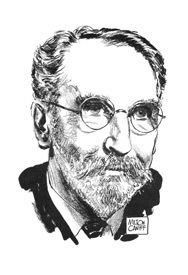Citizenship American | Name Sanford Moss | |
 | ||
Born August 23, 1872San Francisco, California ( 1872-08-23 ) Alma mater Cornell UniversityUniversity of California, San Francisco Thesis The gas turbine an "internal combustion" prime-mover. (1903) Books Elements of gas engine design Notable awards | ||
Residence United States of America | ||
Sanford Alexander Moss (August 23, 1872 – November 10, 1946) was an American aviation engineer, who was the first to use a turbocharger on an aircraft engine.

Life and career
Sanford Moss was born 1872 in San Francisco, California to Ernest Goodman Moss and Josephine Sanford. He received his B.S. and M.S. in engineering from the University of California, San Francisco.
On August 23, 1899 he married Jennie Edith Somerville Donnely in Chicago, Illinois.
Moss received his Ph.D. from Cornell University where he built his first gas turbine engine. In 1903 after graduation, Moss became an engineer for General Electric's Steam Turbine Department in Lynn, Massachusetts. At GE he worked with Elihu Thomson, Edwin W. Rice, and Charles Steinmetz. While there, he applied some of his concepts in the development of the turbosupercharger. His design used a small turbine wheel, driven by exhaust gases, to turn a supercharger.
In autumn of 1917 William F. Durand, Director of the National Advisory Committee for Aeronautics, received incomplete reports that a French engineer named Auguste Rateau was attempting to develop engines for high altitudes using a turbo-driven air compressor. Durand remembered Moss as a graduate student who worked on gas driven turbo engines twenty years earlier at Cornell before starting a career at the gas turbine division of General Electric. Durand wrote to the president of GE, Edwin W. Rice, requesting Moss' services:
After this turbochargers became Moss' life work.
Moss built a high-RPM supercharger, driven by engine exhaust flow, and tested it in 1918 at Wright Field in Dayton, Ohio. As a result of this test, the government awarded its first supercharger contract to GE.
Later in 1918 Moss attached his turbo-supercharger to a Liberty V-12 aero engine and tested it near Pikes Peak. The test engine was able to maintain far higher air intake-charge densities at high altitude than an unassisted Liberty Engine.
Moss installed s 356hp turbocharged engine on a LePere LUSAC biplane, which set international performance records, including in 1921 an altitude mark in excess of 40,000 feet; more than double LePere's operational ceiling.
After his retirement from GE in 1938, Moss was awarded the Collier Trophy, presented by the National Aeronautic Association in 1940 for his work on the turbocharger.
Moss was an aviation consultant to the Army and, in 1942, worked with Washington and GE as the company secretly created the 1-A, the first workable jet aircraft engine, using the turbine principles that Moss had first researched.
He died on November 10, 1946 in Lynn, Massachusetts at 74 years of age.
